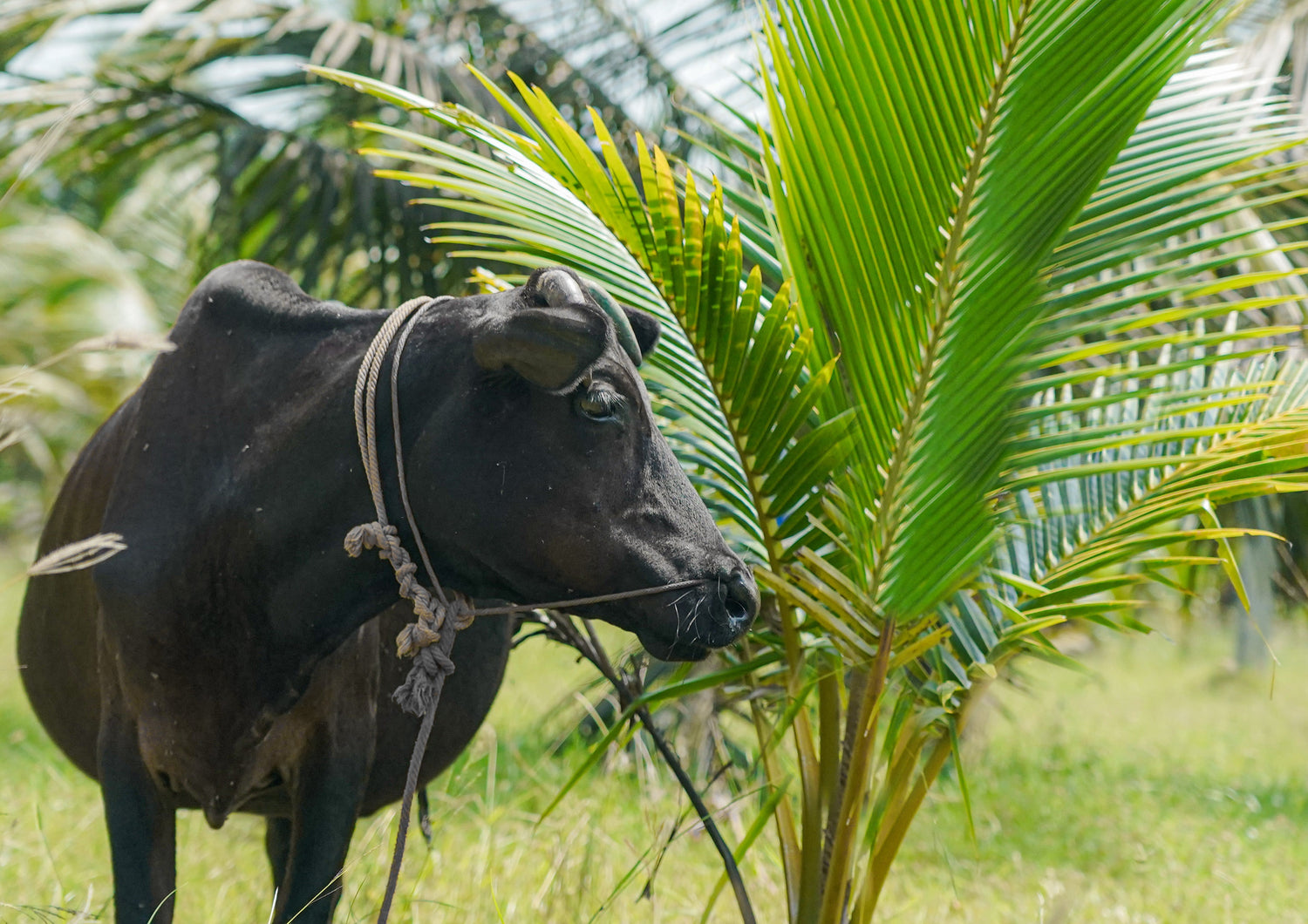In an Integrated Farming System, agriculture can be combined with livestock, poultry, and fish farming on the same premises to provide year-round employment and additional income. Integrating cattle and poultry with coconut farming allows for more efficient use of land, water, and nutrients. Cattle can graze on pasture or fodder cultivated between coconut trees, while poultry can forage among the coconut palms, aiding in pest and weed control. The manure from both cattle and poultry can be applied to enrich the soil, reducing the reliance on synthetic fertilizers. Typically, 50 to 100 poultry birds and 1 cattle are maintained per acre of coconut, depending on factors like availability of fodder and the quality of pasture. To scale up production and enhance family income and employment opportunities, farmers should consider growing compatible annual and perennial crops alongside coconut and integrating allied agro-enterprises.
Coconut + Fodder Grass + Fodder Legume + Fodder Trees + Goat
The Integrated Farming System approach helps farmers meet diverse needs, reduce production costs through the recycling of on-farm resources, and improve their standard of living. There is significant potential to increase coconut farm income by adopting the Integrated Farming System model of Coconut + Fodder Trees + Pasture Crops – Goat, and promoting it within the coconut community. Farmers can utilize the inter- and intra-row spaces of coconut plantations to cultivate fodder grasses like Cumbu Napier hybrid, fodder legumes such as Desmanthus, and fodder trees like Sesbania grandiflora, Leucaena leucocephala, and Gliricidia along the border bunds of coconut farms. Goat manure can partially supplement the nutrient needs of coconut and fodder grasses. Tellicherry goats, kept in a ratio of 6 females to 1 male, are maintained per acre of coconut, fodder trees, and pasture crops. Green fodder from these sources provides balanced nutrition for goat growth, health, and lamb production. Coconut-based intercropping and mixed cropping systems are effective and economically viable for controlling weeds in coconut plantations. Generally, intercropping with suitable crops and proper intercultivation can reduce weed populations and increase coconut yields, while creating soil mulch and controlling weeds.
